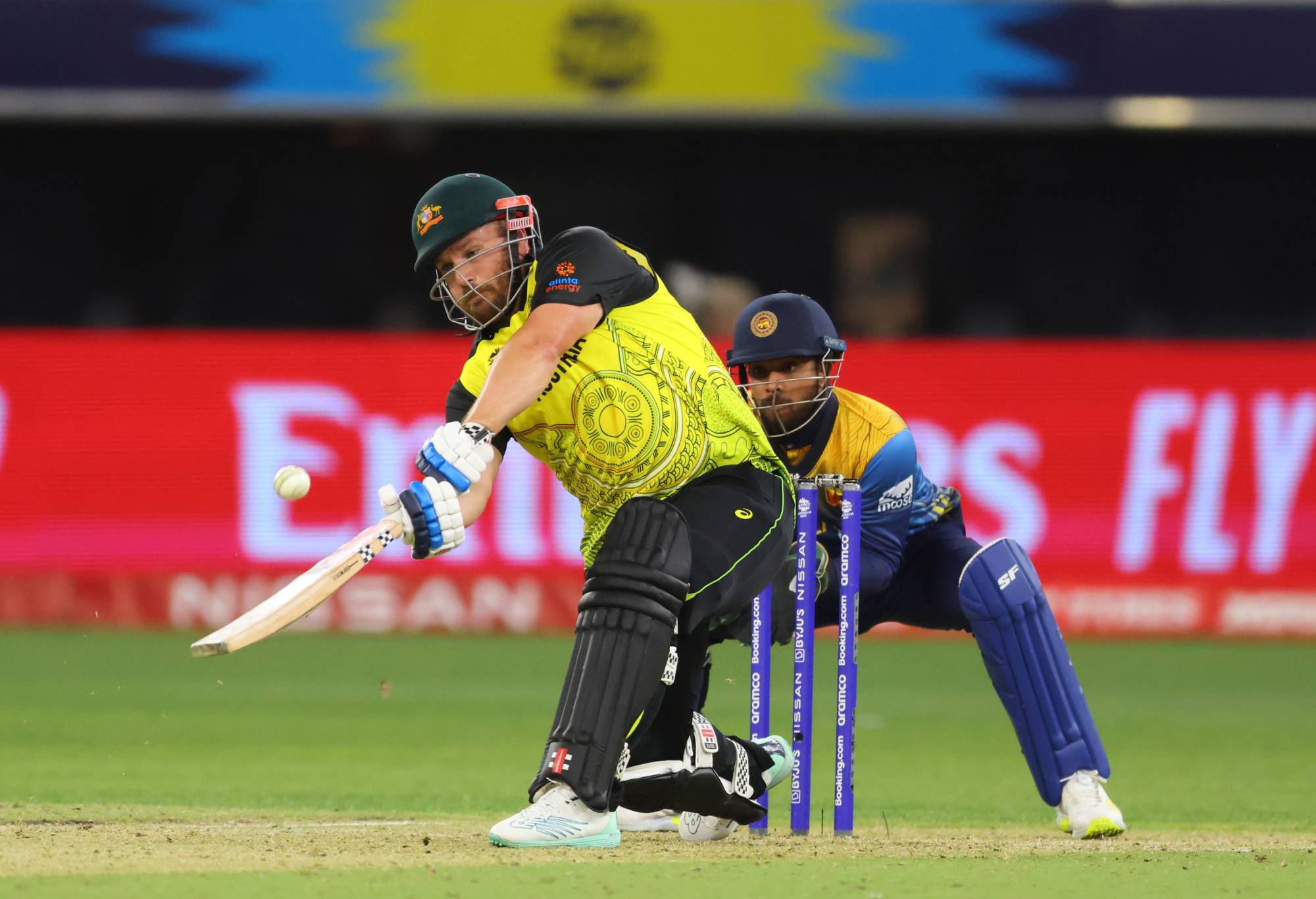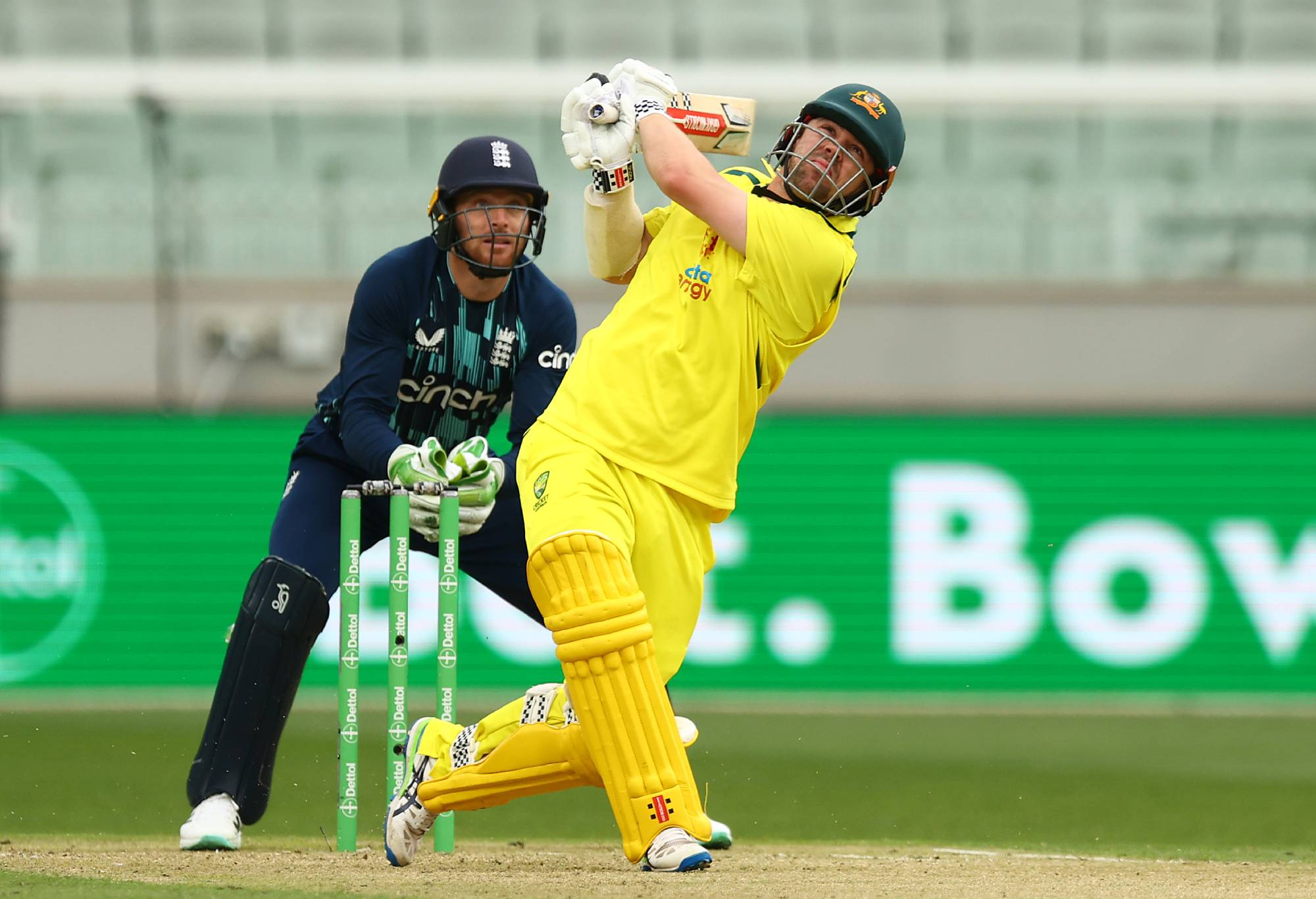Like most elite sportspeople, Aaron Finch hung on longer than he should have before announcing his retirement but in cricket’s most lucrative era, it’s hard to blame players for squeezing every last drop out of their career.
Finch, who announced his retirement from the T20 team at the MCG on Tuesday morning having already quit from the 50-over format at the start of the summer, has struggled to produce his best form over the past 12 months.
He probably should have retired after leading Australia to the T20 World Cup triumph against the odds in the UAE at the end of 2021.
Despite a modest final year in the green and gold, he should still be remembered as one of Australia’s best white-ball batters of all time after the 36-year-old posted 5406 runs at an average of 38.89 from 146 one-day internationals and 3120 runs at 34.28 in 103 T20 internationals. A World Cup winner with the 2015 ODI side as well as the T20 triumph two years ago, the Victorian veteran said “the time was right to let the T20 team move onto a new phase”.
CLICK HERE for a seven-day free trial to watch cricket on KAYO
“Particularly with a World Cup coming up in 2024, I think the time is right to allow them enough time and space to allow a new captain to take over and move the team in their direction,” he said. “It has been a pretty amazing journey.”

(Photo by James Worsfold/Getty Images)
Finch, who confirmed he would continue to play for Melbourne Renegades in the BBL for the next two years, also played five Tests in 2018 when David Warner, Cameron Bancroft and Steve Smith were banned for ball-tampering and while he managed a couple of half-centuries in his five Tests, his return of 278 runs at 27.8 suggested he did not have the technique to be an opener in the five-day format.
His retirement means Australia need a new T20 skipper but there is no rush to appoint one given their next match in the shortest format is not until they travel to South Africa in September.
Test skipper Pat Cummins took on the ODI leadership as well this summer and is reluctant to add the third format to his already bulging workload.
When Finch missed the final group game of the World Cup in November against Afghanistan with a hamstring, keeper Matthew Wade filled in as skipper but he has already indicated his international days are over.
Steve Smith, after being dropped for most of the World Cup, is back in the mix for the Australian T20 team and has plenty of captaincy experience at international level – as well as the baggage that comes with the Sandpapergate scandal.
His explosive efforts as opener with the Sydney Sixers last month suggest that he would be a shoo-in to replace Finch at the top of the order and the 33-year-old could also take over the captaincy if the selectors are looking at a short-term leader to guide the side to the 2024 World Cup in the Caribbean and US.
A longer term option would be Travis Head, who has been considered a future national leader ever since he took over the Sheffield Shield captaincy at South Australia in his early 20s.
Head has cemented his spot in the Test team over the past 18 months and blitzed it when recalled to the ODI side in November with 152 off 130 at the MCG part of a three-match return of 240 runs at a 111.62 strike rate.

(Photo by Graham Denholm – CA/Cricket Australia via Getty Images)
The 29-year-old left-hander has tactical nous and was more than capable in his 17 T20s for Australia – 345 runs at 26.53 at 133.2 – and could slot pretty much anywhere into the order.
Although he has only played once for the Aussies in T20s over the past four years, now is the perfect time to hand him the captaincy.
If he maintains his recent purple patch in the red-ball arena, he’s shaping as the best option to succeed Cummins as Test captain in a few years time as well.
Finch said to let the new captain “find their own feet and find their own direction is important”.
“There’s plenty of guys who can do it – Steve Smith has done it before and done a good job. Pat Cummins, I doubt he would want to do it with such a big workload coming up. And then there’s guys from the outside who could come in and have a big impact. Travis Head, Ashton Turner, these type of guys I think are experienced, they know how to win as well so whichever way they go, the team’s in great hands.”
Chief selector George Bailey made history when he made his T20 debut in 2012 when he became the first man since Dave Gregory in the very first Test in 1877 to captain Australia in his first match.
A left-field option could be Brisbane Heat skipper Jimmy Peirson, who has shown excellent leadership at his BBL franchise over the past two seasons, helping drag them from last place to the final recently only to be denied the trophy by a late Scorchers flourish of runs.
Counting against Peirson is the fact that Perth’s Josh Inglis is ahead of him on the wicketkeeper pecking order and is a better batter. Inglis has limited captaincy experience but as a likely long-term T20 player for Australia, he should be in the selectors’ little black book as a leadership option.

Ashton Turner cuts away from Jimmy Peirson in the BBL final. (Photo by Paul Kane/Getty Images)
Ashton Turner is the reason why Inglis does not have the captaincy at BBL level and if the selectors are keen on a specialist T20 skipper, his efforts as Scorchers skipper and as a middle-order power hitter should have the 30-year-old in the frame for a spot in the white-ball squads later this year.
Turner has played 18 T20s and nine ODIs for Australia since 2017 in short spurts but is the kind of late bloomer who could string together a solid stint at international level well into his 30s.
Of the incumbent players in the Australian T20 squad from the World Cup, there are few genuine captaincy options.
David Warner, if he retains his spot, is ineligible after withdrawing his appeal over his leadership ban, Mitch Marsh has stated he is not interested, Glenn Maxwell has captaincy experience at franchise level but is 34 and on the comeback trail from a broken leg.
Josh Hazlewood has been vice-captain at Test level but after his recent run of injuries, the Australian brains trust should be looking to reduce the 32-year-old quick’s workload across the three formats rather than adding to it.
Leg-spinner Adam Zampa is one of the few selection certainties for the post-Finch era and got a taste of captaincy this summer at BBL level when he stepped in for Maxwell at the Melbourne Stars.
Although their poor roster construction was at the heart of their woes rather than Zampa’s efforts as leader, they finished well below expectations in last spot.































































































